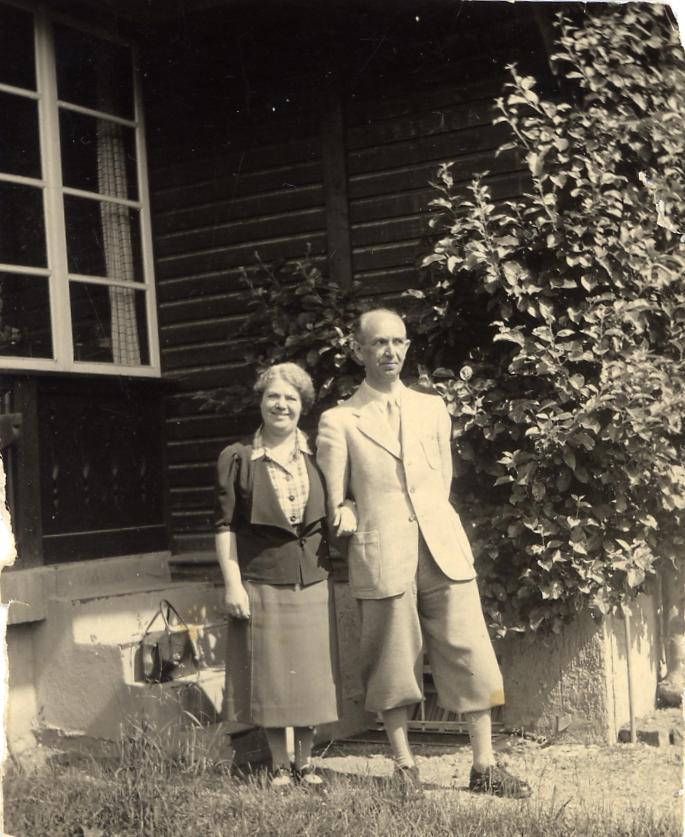Paul Englaender
04.07.1884, Jarotschin/Poland
07.03.1943, Augsburg
Residencies
Posen
Breslau
Freising
Augsburg, Annastraße 6
Augsburg, Bahnhofstraße 18 1/5
Last voluntary residence
Places of persecution
Planned deportation
to Auschwitz
on 8 March 1943
Suicide on 7 March 1943
Paul Englaender came from the province of Poznan. He was born on 4 July 1884 as the son of Louis, a businessman, and his wife Jeanette, née Grün in the district of Jarotschin, which at that time belonged to Prussia and since 1918 to Poland. After completing his secondary schooling in 1902, Englaender studied dentistry in Breslau and in Freiburg in Breisgau. In 1906 he passed his state examination in Freiburg with the grade "good". It is not known why he moved to Augsburg in 1910 after a temporary job as an assistant doctor. He began military service in 1916 and in the last year of the war was a field hospital dentist in the ward for jaw injuries. In 1921 he received his doctorate from the University of Würzburg with a thesis on "Antisepsis and Asepsis in Dental Practice". In 1914 Englander married Hedwig Steinfeld, born in 1891, the daughter of Hugo (1864-1941) and Lina Steinfeld, née Heilbronner (1869-1941). Thus, Paul Englaender was part of the upper social circles of the city and one of the respected members of the religious community. His father-in-law was a wealthy businessman and a generous sponsor for the construction of the new synagogue between 1914 and 1917. Together with his brother-in-law, the Kommerzienrat (an honorary title for important figures in business) owned the well-known textile company Wimpfheimer & Co. at Bahnhofstraße 18 1/5. The imposing commercial building, with its copper-plated towers and oriels, was a city landmark. In addition, Steinfeld was one of the first Jews to become involved in Augsburg's local politics, first as a municipal representative and since 1919 as a city councillor for the German Democratic Party (DDP).
Paul and Hedwig Englaender moved to Annastraße 6, the same building which housed the practice. Their two children grew up there: their daughter Elisabeth, born in 1915, called Lisl (died 1980) and their son Hans/John (1919-2007), born four years later. When the National Socialists came to power, the persecution measures of the Nazi state had an immediate and unchecked impact on the Englaender, who was considered an "Eastern Jew" because of his birthplace. The Augsburg NSDAP blacklisted him on April 1, 1933, on the call to boycott Jewish medical practices, shops and law firms followed in April by the withdrawal of his admission to the statutory health insurance funds. With difficulty, Englaender was able to continue his practice with private patients until the Nazi government prohibited him from working in his acquired profession with the withdrawal of his license on January 31, 1939.

The family could no longer afford the apartment in the high-priced Annastraße and at the end of 1939 moved to her parents' house at Bahnhofstraße 18 1/5 into the apartment of Hedwig's twin sister Anna, who had fled with her family to the USA in October. Hedwig and Paul Englaender also intended to emigrate. However, because Paul Englaender was considered a Polish citizen, they were not allowed to emigrate together. Since they did not want to face the unstable situation separately, they remained in Augsburg, still seeking a possibility to leave. They had already been able to move their children to safety in the USA. Now they were subjected to repressions which were continually worsening. Since the beginning of 1939 they were forced to bear the compulsory names Sara and Israel and as of September 1941 they had to wear the mandatory yellow badge. As early as 1939, the Nazis had made the house in Bahnhofstrasse into a "Judenhaus" (Jewish House), where other Jews were forcibly quartered. On 23 October 1941, the ban on Jews emigrating destroyed all hopes of the Englaenders that they would finally be able to leave Germany.
Meanwhile they had to share their apartment with two other couples. As of 27 April 1942, Hedwig was forced to work every day at the Augsburg Balloon Factory. When the couple received the deportation order to Auschwitz at the beginning of April 1943, they decided to commit suicide, just as their parents, Hugo and Lina Steinfeld had done on 6 November 1941. On March 7, 1943, one day before their deportation date, Paul and Hedwig Englaender, along with Ludwig and Selma Friedmann, Julius and Anna Guggenheimer, and Louis Karl Kohn, took their own lives. Acquaintances Dr. and Mrs. Zeitler were with them that night. After the war, the Zeitlers gave Hans Englaender, who now called himself John Englaender, the gold wristwatch they had received that night from his father.
Benigna Schönhagen, Dr. Paul Englaender, in: Benigna Schönhagen and Michael Spotka, Augsburg's Jewish doctors during National Socialism. A city walk, Augsburg 2016.
Translation by Cynthia Byrne
Bayerisches Hauptstaatsarchiv (BayHStA), Abt. IV Kriegsarchiv
Kriegsstammrollen, (KStR; eingesehen bei www.www.ancestry.de):
– Bd. 20030 KStR Bd. 3
Stadtarchiv Augsburg (StadtAA)
Bestand Amtsgericht Augsburg Nachlassakten
– VI 103, 104/1950
Bestände Familienbögen und Meldekartei
Bestand Wiedergutmachungsbehörde für Schwaben (W.B. V):
– W.B. V a 214
– W.B. V a 485
– W.B. V a 608
Souzana Hazan, …dieser schönen Welt Lebewohl sagen. Der Weg der Familie Sturm aus Augsburg, in: Benigna Schöntaten (Hg.), Lebenslinien. Deutsch-jüdische Familiengeschichten Bd. 3, Augsburg 2010.
Gernot Römer (Hg.), An meine Gemeinde in der Zerstreuung. Die Rundbriefe des Augsburger Rabbiners Ernst Jacob 1941 – 1949. Mit einem Beitrag von Walter Jacob, Materialien zur Geschichte des Bayerischen Schwaben, Bd. 29, Augsburg 2007.
